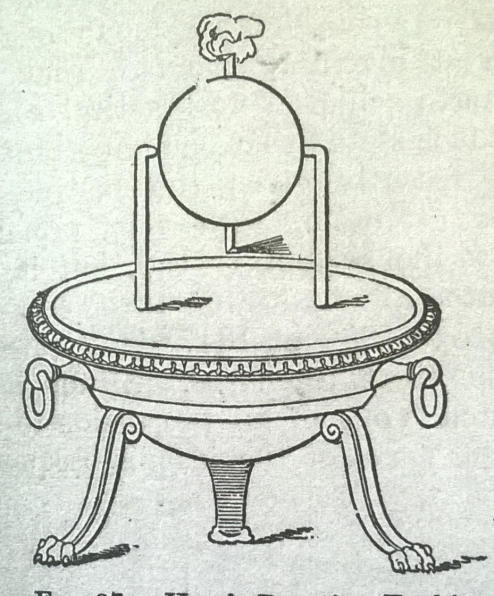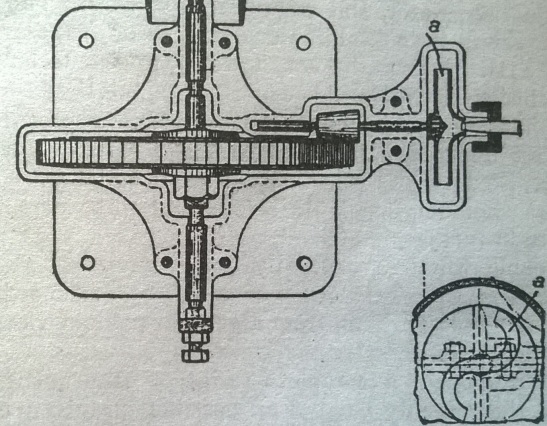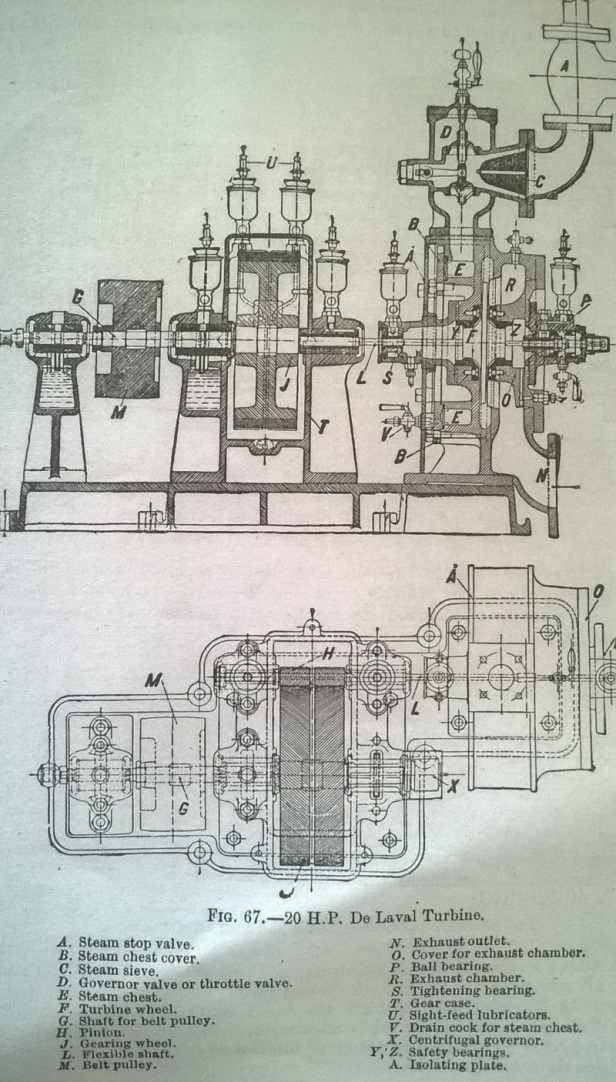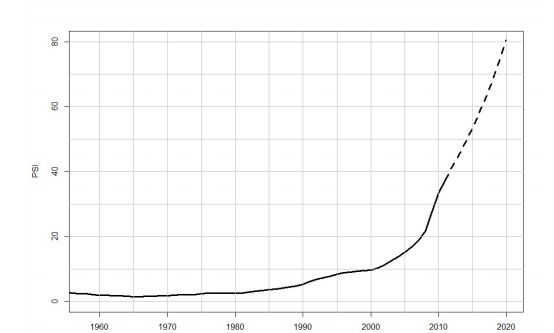
Date: July 28, 2017
Author: Paul Cockshott
In my last post I repeated Marx’s phrase the the hand mill gave you the feudal lord the steam mill the industrial capitalist. One reader objected that this overstated the role of technology and that steam power was already known to the Romans. I concede that Marx over simplified. There were thousands of water mills in England recorded in the Domesday book. So ownership of water mills was a key part of the power of the feudal lords. A better phrase would have been that the water mill brings you the feudal lord the steam mill the industrial capitalist. But to return to the original question.
The ancient Romans already had a working steam turbine in Hero’s aeolipile. Why were they not able to turn this to use in industry, pumping water or turning millstones?
Why no industrial revolution in antiquity?
There are well known arguments about the social relations of slavery impeding the development of labour saving technology, but is this enough of an explanation?
We know that the ancients harnessed the power of water for grinding corn and other industrial uses, so they were not completely indifferent to artificial sources of power.
Could they not have used steam turbines instead of water wheels to grind corn?
There are the obvious objections that the Mediterranean basin has no coal deposits to fuel steam engines. But in due course they had conquered Northern Gaul and Britannia where they were able to extract coal. Could they have set up and industrial economy in these areas?

Figure 1: Hero’s turbine, or aeolipile reproduced from [1].
I think not. There are inherent technical limitations to the usefulness of Hero’s device, basically its low torque and inefficiency. Steam turbines are now the preferred prime mover – in use in fossil and nuclear power stations across the world, but their superiority has depended on the ability to produce high pressure steam and high rotational velocity. The actual technology that started the industrial revolution – the Watt steam engine had the virtues that it could develop very high torques at low velocity using very low steam pressures.
In order to get a functioning fossil fuel economy you had to have a prime mover and a way of providing fuel for it. The main fuel available was coal which was obtained from mines prone to flooding. The Watt engine was originally developed for pumping out mines, an application which required a lot of force but tolerated a relatively slow engine. The torque T supplied by a Hero style turbine is given by the rule
T = p × 2a × r
whee p is the steam pressure, a the area of each exhaust nozzle and r the radius of the turbine.
The torque provided by a Watt beam engine was given by a similar rule
T = p × a × l
where p is now the pressure difference between the boiler and the condenser, a the area of the cylinder and l is the beam length.
The early Watt engines were huge, with beam lengths of over 3 meters compared to the few centimeters for the length of hero turbines. This is a factor of 100 difference. In terms of diameter of bore a practical Hero turbine would not have exceeded 1 cm against half a meter for a Watt engine. This is a factor of about 2500 greater area for the Watt machine. Let us assume both operate at the same steam pressure, since the technology of boiler construction was initially the limiting factor. That means that the torque of an early Watt engine was about a quarter of a million times greater than an aeolipile.
Could you build an aeolipile that generated comparable torque?
Well yes if you had arms a couple of meters long on the turbine and nozzles a half a meter in diameter, then the torque would be comparable. But the nozzles of the aeolipile are open to the air, so a nozzle half a meter across would use up an entirely impractical quantity of steam.

Figure 2: Laval’s first turbine used to power a cream centrifuge in 1884. It used a simple modification of Hero’s turbine in concept, but relied on precision engineering and high pressure steam.
An aeolipile is only practical as a power generating device if the revolutions per second are very high. A small torque multiplied by a very high number of revs per second can generate a useful amount of power.
The aeolipile had to go through a series of of steps before it could be converted, in the 1880s into practical turbines by Laval and Parson. The first practical use of of a reaction turbine was for Laval’s cream separator. This required very rapid rotation, around 1000rpm, to centrifugally separate cream from milk, so a high speed device was desirable. Laval’s first prototype was based on the aeolipile but heavily geared down using friction gear to get it down to 1000rpm. His second prototype switched to the impulse principle – directing a jet of high pressure steam against a rotating set of turbine blades.
Rotation speeds were very high the 300hp turbine in Table 1 had a peripheral velocity of 366M/s or 1317Kmph – supersonic velocity.
Table 1: The performance of production Laval turbines of the late 19th century. Data from [1]
| Horse Power | Radius | Revs per min of turbine | Revs per min of geared output |
| 5 | 5cm | 30,000 | 3,000 |
| 30 | 11cm | 20,000 | 2,000 |
| 300 | 35cm | 10,000 | 750 |

Figure 3: Laval’s second turbine 1886 switched to the impulse principle and went into practical production.
Between the start of steam power and the first practical use of a reaction turbine over 100 years elapsed, during which many engineers came up with suggestions for turbines. But it was not until the 1880s that Parson and Laval designs actual got into use. They depended on having high pressure steam, precision engineering and high strength steels to work. None of these were available to the Romans. They did not have the blast furnaces and forges necessary to make the wrought iron for boilers, far less the Bessemer converters to produce the steel for turbine blades. Steam turbines only became practical as a source of power once industrial society was in full swing.
Well even if turbines were not practical, what stopped the Romans building something like one of Watt’s engines?

Figure 4: The demonstration of atmospheric pressure by Guericke who pumped the air out between two copper hemispheres and demonstrated that even two teams of horses could not pull them appart. This experiment was a key to the development of atmospheric engines like those of Watt.
Basically a lack of scientific knowledge. The Watt engine depended for its power stroke on atmospheric pressure. Steam was supplied at near atmospheric pressure, and then condensed to create a vacuum. That depended in turn on two key prior concepts – the discovery of atmospheric pressure by Torricelli, and the concept of heat as a quantity to be conserved developed by Watt’s supervisor at Glasgow Prof. Black.
Technologies have an order of dependence to them that can not be arbitrarily skipped over. Without the knowledge and skills associated with a particular stage of technology, you can not simply go on to develop the next.

